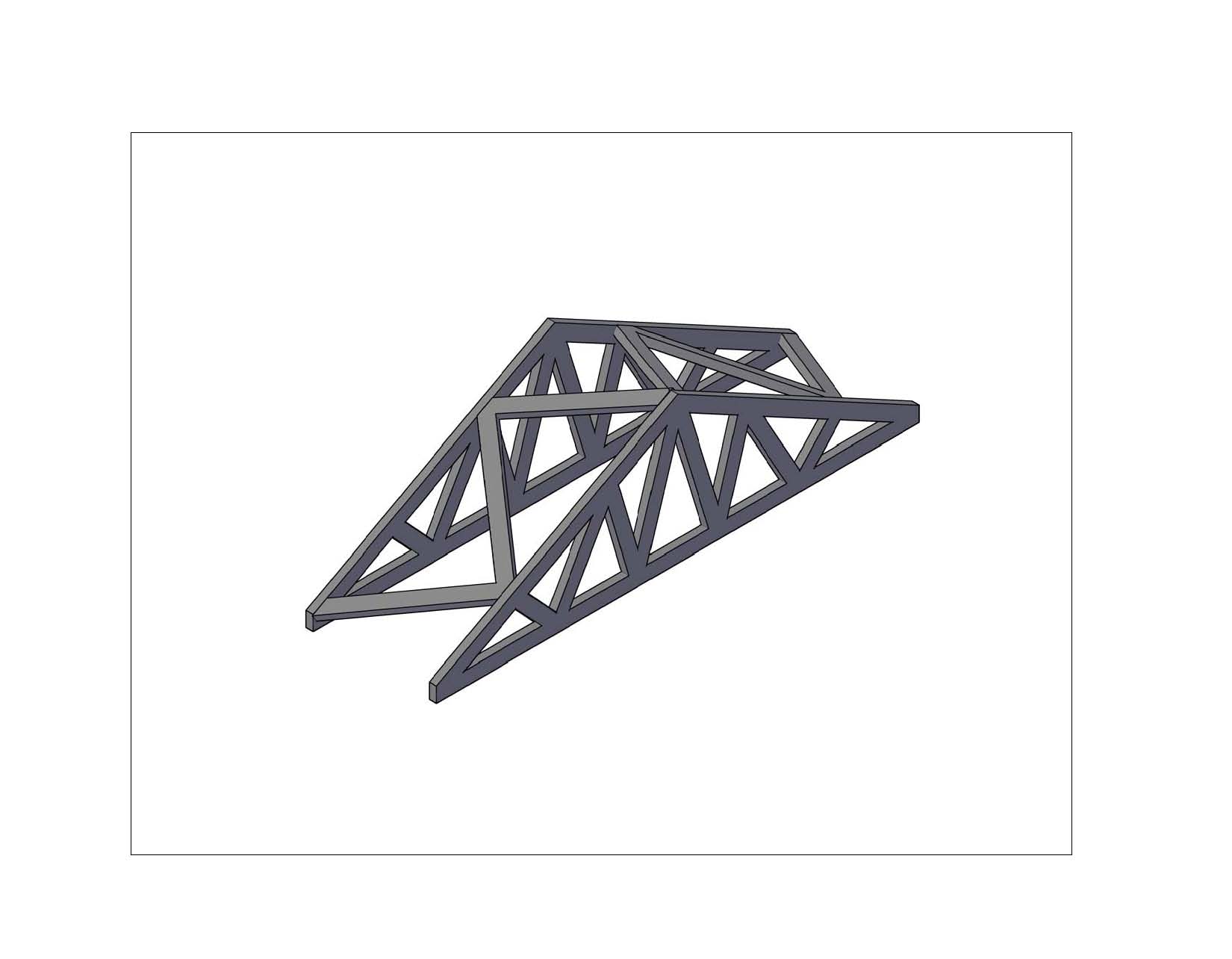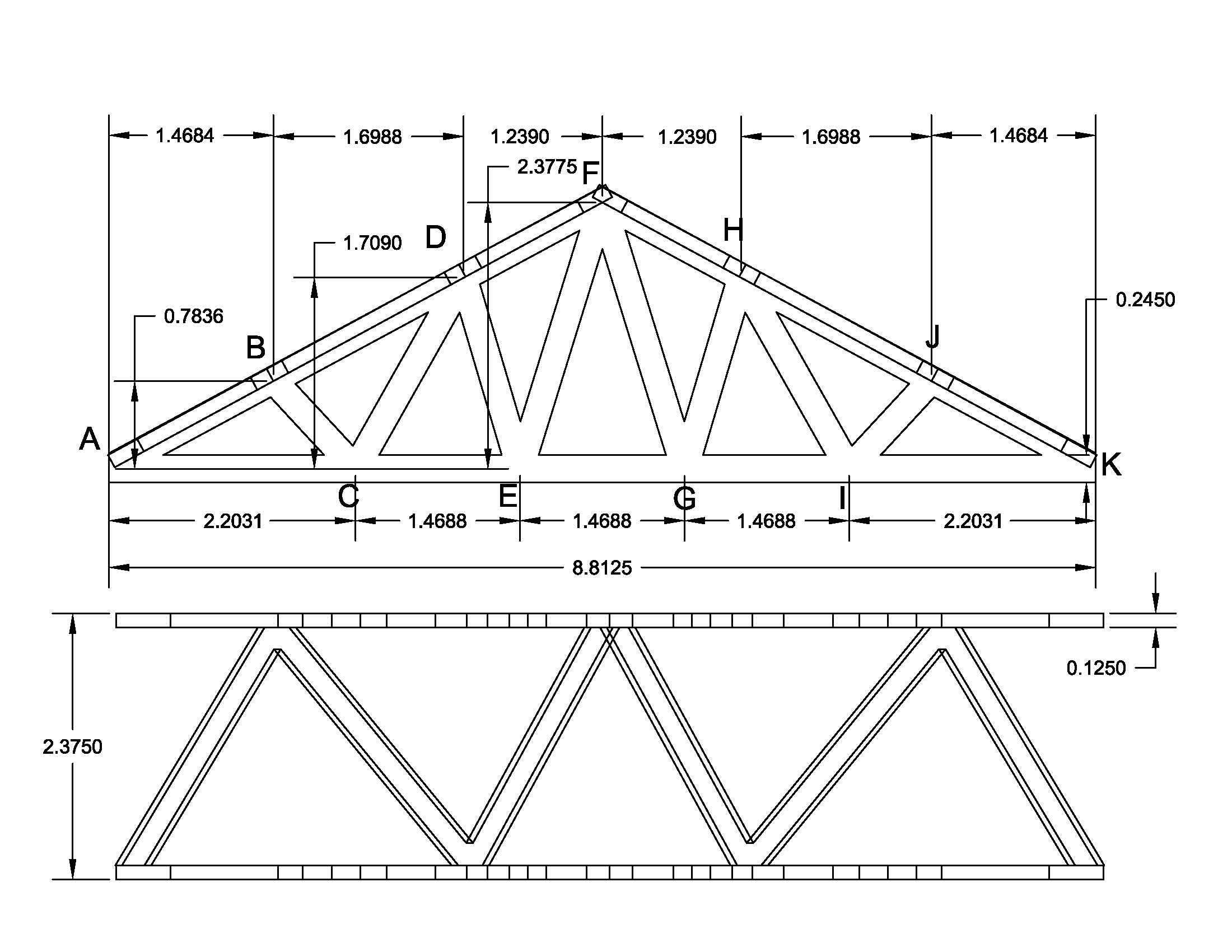 |
|
|
|
|
Balsa Wood Truss This is a project that I had to do for an Engineering class called Statics, which does analysis of all static or not moving objects. The objective was to build the strongest yet lightest structure using only balsa wood and glue. Upon completion of the structure it is to be tested under compressive loading using a Tinius Olsen compression machine which basically compresses/measures how much loading the structure takes before having a full structural failure.
|
|
 |
The first thing I did in coming up with the design was to look at several existing designs that are successful and currently in use. Due to the test being a single point loading, a bridge truss would not be effective enough. So ultimately I decided to go with a roof truss which seemed ideal for a single point loading. So the first step I did was to design the truss in Autocad and print it out in a 1:1 scale on the paper so that I could lay out the balsa wood directly on the paper, cut, and glue all without moving it off of the paper. | |
| This is the print out of the dimensioned structure that was done in Autocad. I used these dimensions to be able to do an excel analysis. Additionally it was simple to construct the truss since it was just a matter of laying out the balsa wood pieces onto the piece of paper and applying glue while the pieces were aligned on the paper. I also labeled each node with a letter so that i could refer to it in the analysis portion. If you click on the image it brings you to the pdf in which it is printed in 1:1 scale. | ||
 |
||
|
The analysis was done using excel. Despite the force
being only at one point of the truss, I decided that I would analyze the
entire truss with a load at any given point, in both positive and negative
loads. In addition to displaying the forces on each member the excel
analysis shows whether each member is in tension, compression, or is a
zero force member. The reactions at points A and K are also calculated.
The great thing about doing an analysis like this is, is that given any
structure with the same number of nodes, the forces at each member could
be calculated by simply changing the distances and height above node A.
Here is a link to the Excel file (format is in excel 2007) |
||
 |
||
| This is the assembled structure made out of balsa wood strips. It is held together with wood glue. Due to the difficulty in holding the pieces together while they dried much of the wood glue had to be applied externally on the joints. For extra support I used gusset plates (the thin balsa wood strips on the face of the truss) to provide an extra surface area for the wood to bind together. The final weight of the structure was just over 14 grams. | ||
|
|
||
| The failure in the of truss happened at a point which wasn't predicted in the excel analysis. This was due to a twisting in the structure caused by the glue not setting correctly which added a twist to the finished truss. So the minimal failure in the visible member which had tension on it, caused the overall failure of the truss on the Tinius-Olsen. I came to the conclusion that a perfectly square base between the two truss structures is very important so that the load is evenly distributed. The structure was able to support 75 lbs before the failure. | ||
|
|
||
